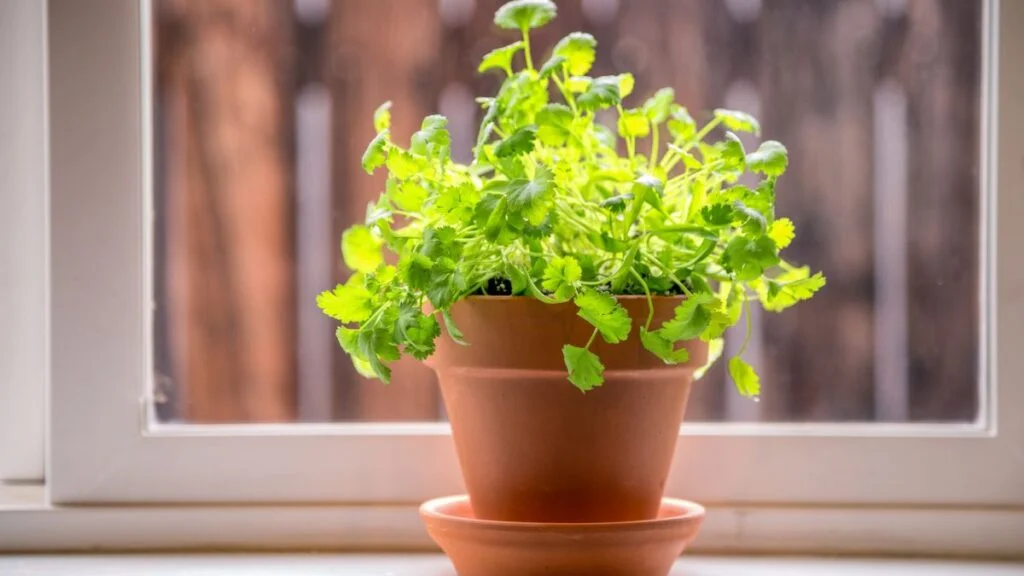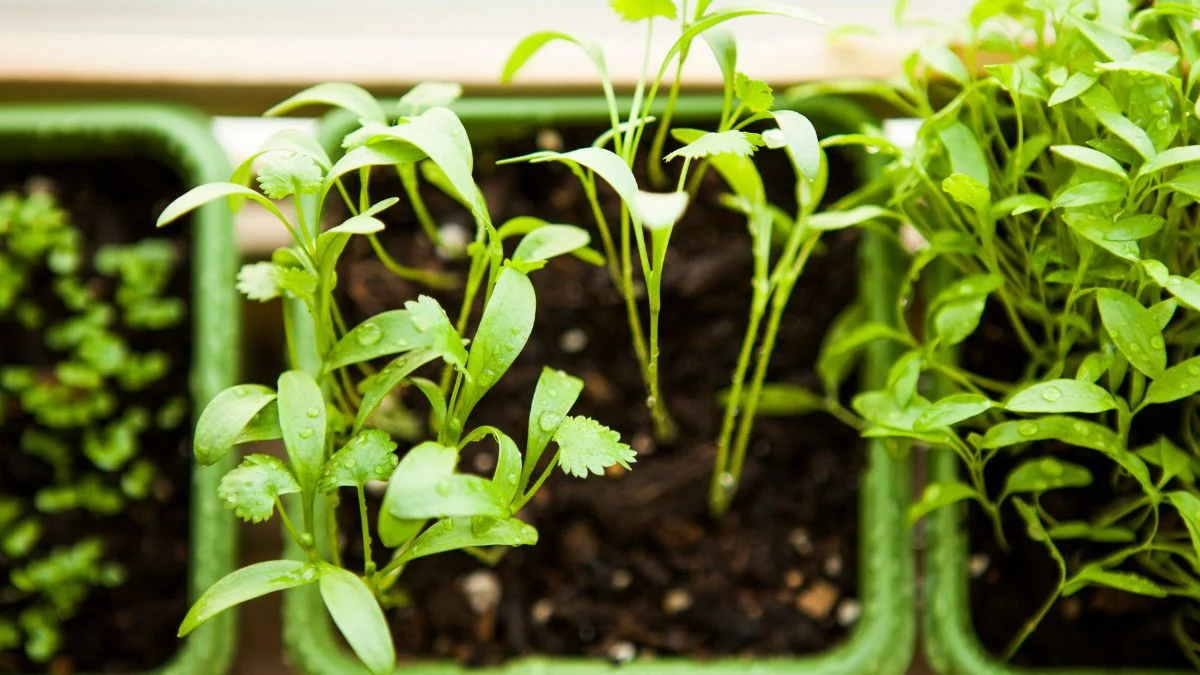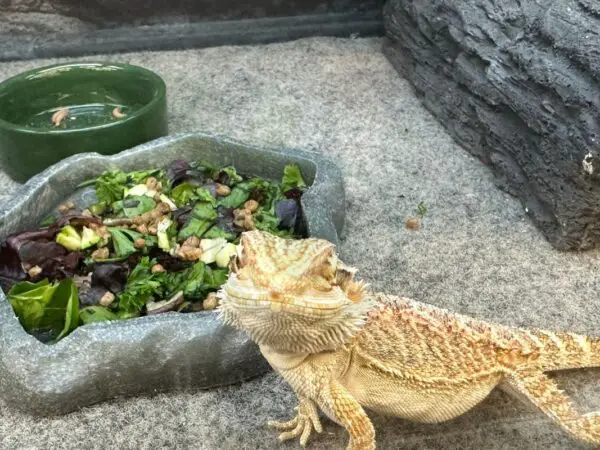Discover the joys of growing cilantro indoors and elevate your cooking game with fresh, homegrown herbs. Whether you're a seasoned gardener or just starting, cultivating a cilantro plant indoors is a rewarding experience that adds flavor to your dishes. Learn how to care for your indoor cilantro plant, from planting seeds to harvesting flavorful leaves right in your kitchen.
Explore the rich history of cilantro, a herb with roots dating back to ancient civilizations like the Egyptians and Romans. Uncover the cultural significance and culinary uses of this versatile herb, fresh cilantro, while enjoying the convenience of having it at arm's reach in your indoor garden. Get ready to enhance your culinary creations with the vibrant flavors of freshly grown cilantro produce!
Why Grow Cilantro Indoors
Space Saving
Utilize vertical space for growing cilantro indoors. Consider hanging planters or wall-mounted containers for efficient space usage. Opt for compact varieties of cilantro to maximize space.
Year-Round Harvest
Follow a staggered planting schedule for continuous cilantro harvest throughout the year. Rotate planting batches to ensure a consistent fresh supply of cilantro. Extend the growing season by providing optimal indoor conditions for cilantro growth.
Easy Access
Place indoor cilantro near the kitchen for convenient access while cooking. Use small pots or windowsill planters for easy reach and maintenance. Keep indoor cilantro within arm's length to encourage regular harvesting.
Selecting Cilantro Varieties

Best Varieties
When growing fresh cilantro indoors, try varieties like "Santo" known for thriving in indoor settings. Consider "Calypso" or "Leisure" as they adapt well to indoor conditions. Experiment with diverse cilantro types to find your preferred choice for indoor cultivation.
Flavor Profiles
Appreciate the unique flavors of cilantro varieties cultivated indoors. Enjoy the vibrant and fresh taste of homegrown cilantro in your cooking. Experiment with various cilantro flavors to elevate the taste of your culinary creations.
Starting From Seed
Choosing Seeds
When starting your indoor cilantro garden, ensure to pick high-quality seeds from reputable sources. Opt for organic seeds to promote a healthy growing environment. Consider heirloom seeds for unique flavors and characteristics.
Sowing Techniques
To maximize growth success, practice proper seed spacing when planting cilantro indoors. Ensure an even distribution of seeds in the container for uniform growth. Gently press the seeds into the soil and cover lightly to facilitate germination.
Ideal Conditions
Maintain consistent temperatures between 50-80°F for optimal cilantro growth indoors. Provide adequate ventilation to prevent humidity buildup around the plants. Create a cozy indoor environment with moderate light and warmth for thriving cilantro.
Essential Care Tips
Watering Needs
When the top soil layer feels dry, water the indoor cilantro plants to keep them hydrated. Avoid overwatering to prevent issues like root rot and fungal diseases. Use room temperature water for effective hydration.
Consider supplementing natural light with grow lights for cilantro. Ensure the plant receives a minimum of 6 hours of direct sunlight daily. Rotate the plants regularly to ensure even light exposure on all sides.
Lighting Requirements
Place your indoor cilantro in a spot that receives at least 6 hours of direct sunlight daily. Consider using supplemental grow lights during periods of low natural light. Regularly rotate the plants to promote even growth.
Pruning and Repotting
When to Prune
Pruning your cilantro plant indoor is essential to promote healthy growth and prevent it from becoming leggy. Regularly trimming the plant helps maintain its shape and encourages new leaf growth. Typically, you should prune cilantro when it reaches about 6 inches in height.
To prune, simply use clean scissors or shears to cut the stems just above a leaf node. This process not only keeps the plant compact but also prevents it from flowering too early. Avoid cutting more than one-third of the plant's height at once, as this can stress the cilantro.
Repotting Basics
Repotting your cilantro plant indoor is necessary when it outgrows its current container or shows signs of root-bound. Choose a new pot that is slightly larger than the current one to allow room for growth. Ensure the new pot has drainage holes to prevent waterlogging.
When repotting, gently remove the cilantro plant from its current pot, being careful not to damage the roots. Loosen the roots before placing it in the new container with fresh potting soil. Water thoroughly after repotting to help the plant adjust to its new environment.
Propagation Methods
Growing cilantro plants indoors can be achieved through various propagation methods. Understanding the techniques for seed and cutting propagation is essential for successful cultivation.
Seed Propagation
Seed propagation is a common method for growing cilantro indoors. Start by selecting high-quality seeds to ensure healthy plant development. Plant the seeds in well-draining soil, keeping them moist until germination occurs. Ensure adequate sunlight and maintain consistent watering to support growth.
To promote strong root development, thin out seedlings as they grow to prevent overcrowding. Transplant the seedlings into individual pots once they have developed several sets of true leaves. Regularly monitor the moisture levels in the soil and adjust watering accordingly to prevent drying out or overwatering.
Cutting Propagation
Cutting propagation is another effective way to propagate cilantro plants indoors. Begin by taking cuttings from mature cilantro plants, ensuring each cutting has several sets of leaves. Place the cuttings in water and wait for roots to develop before transferring them to soil.
Regularly change the water to prevent stagnation and ensure optimal root growth. Once roots have established, transplant the cuttings into individual pots with well-draining soil. Provide ample sunlight and maintain consistent watering to support their growth and development.
Harvesting Techniques
Harvesting cilantro at the right time is crucial to ensure the best flavor and freshness. When to Harvest your cilantro depends on whether you want mature leaves or microgreens.
When to Harvest
For mature cilantro leaves, wait until the plant is about six inches tall. Harvesting should be done before it flowers for optimal taste. Regularly trim the outer leaves to encourage growth.
Harvesting Leaves
To harvest cilantro leaves, simply snip them off with sharp scissors or pruners. Using Microgreens involves harvesting when the first true leaves appear, usually within 14-21 days.
Using Microgreens
Microgreens are young seedlings harvested just after the first true leaves emerge. They are packed with flavor and nutrients, making them a popular choice in salads and garnishes. To enjoy fresh microgreens at home, sow cilantro seeds densely in a shallow container filled with soil. Keep the soil moist and place it in a sunny spot for optimal growth. After a few weeks, when the seedlings have developed their first true leaves, carefully cut them just above the soil level for consumption.
Common Challenges
Pest Management
Dealing with pests can be a significant issue when growing cilantro indoors. Common pests include aphids, spider mites, and whiteflies. These pests can damage the leaves and stems of the cilantro plant.
To manage pests effectively, regularly inspect your cilantro plant for any signs of infestation. If you notice pests, remove them by gently washing the leaves with soapy water or using organic insecticidal soap. Another method is to introduce beneficial insects like ladybugs that feed on harmful pests.
Disease Prevention
Preventing diseases is crucial for maintaining a healthy cilantro plant. Fungal diseases such as powdery mildew and damping-off can pose a threat to your plant's growth. Ensure proper air circulation around the plant to prevent fungal infections.
To prevent diseases, avoid overwatering the cilantro plant as excessive moisture can promote fungal growth. plant cilantro in well-draining soil and ensure adequate sunlight exposure to keep the plant healthy and disease-free.
Final Remarks
In your journey to grow cilantro indoors, you've learned the importance of selecting the right varieties, starting from seed, providing essential care, pruning, repotting, propagating, harvesting, and overcoming common challenges. By following these steps, you can enjoy a fresh and abundant supply of cilantro right in your home. Remember to stay attentive to its needs and adjust your care accordingly for a thriving plant.
Now that you have the knowledge and tools at your disposal, it's time to put them into action. Start your indoor cilantro garden today and experience the joy of having this versatile herb at your fingertips whenever you need it. Share your success with others and continue to explore the world of indoor gardening for more rewarding experiences.
Frequently Asked Questions
Can cilantro be grown indoors successfully?
Yes, cilantro can thrive indoors if provided with sufficient light, well-draining soil, and regular watering. Consider placing the plant near a sunny window or using grow lights to ensure proper growth.
How do I choose the right variety of cilantro for indoor cultivation?
Opt for compact varieties like Santo or Calypso that are well-suited for indoor growing due to their manageable size and quick maturity. These varieties also tend to have better resistance to bolting.
What is the best way to start growing cilantro indoors from seeds?
Start cilantro seeds in a shallow container filled with moist potting mix. Sow the seeds thinly, cover lightly with soil, and keep them consistently moist until germination occurs. Once seedlings develop, thin them out to prevent overcrowding.
What are some essential care tips for maintaining healthy indoor cilantro plants?
Ensure your indoor cilantro receives at least 6 hours of sunlight daily, rotate the plant frequently for even growth, maintain consistent moisture levels without overwatering, and fertilize sparingly with a balanced liquid fertilizer.
How can I propagate cilantro plants indoors for continuous harvest?
To propagate cilantro indoors, you can either sow new seeds every few weeks for a staggered harvest or snip off mature leaves regularly to encourage new growth. Consider dividing mature plants carefully to create more individual plants.
Image Source: Paid image from CANVA




